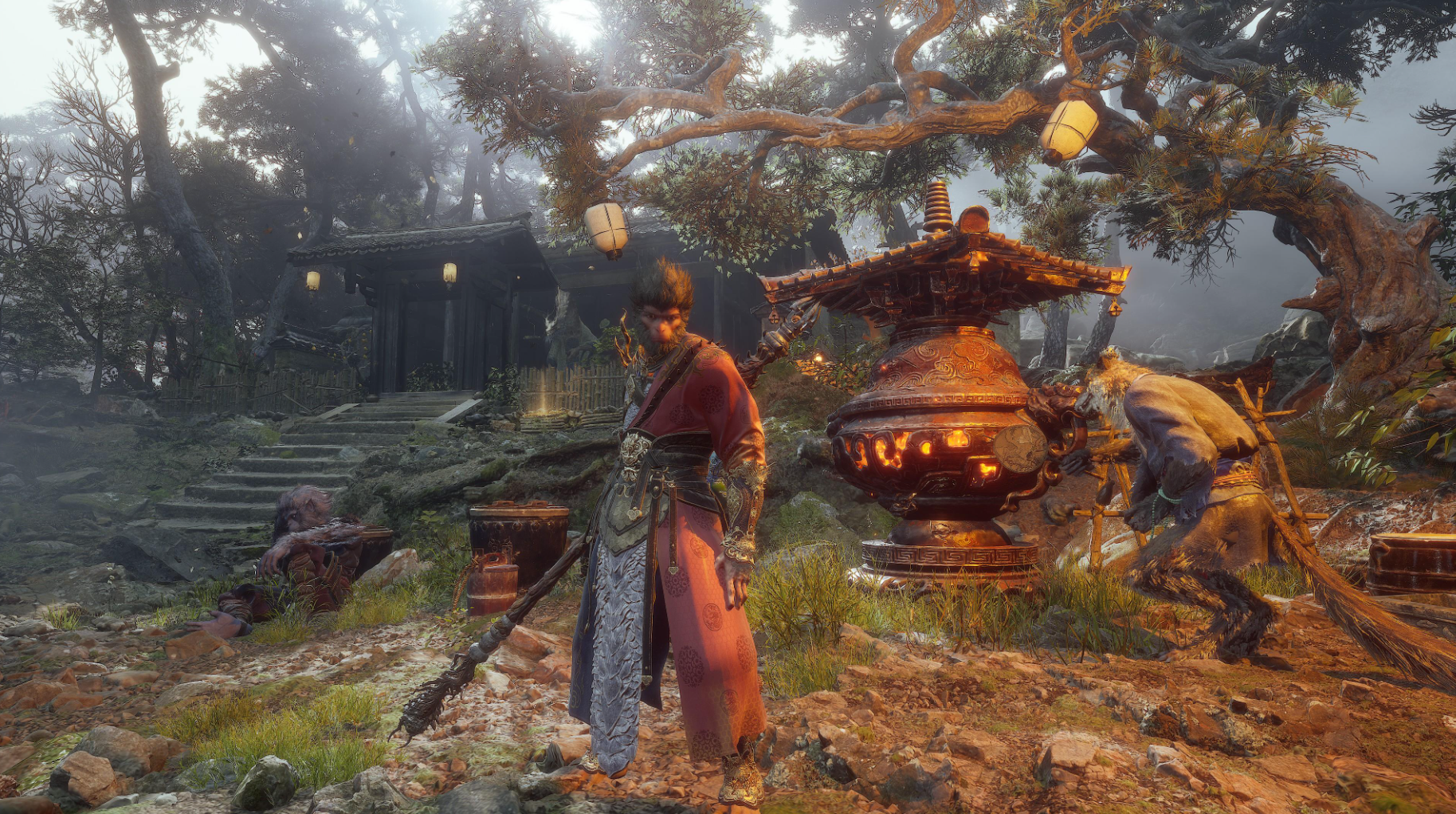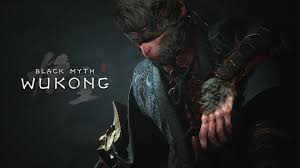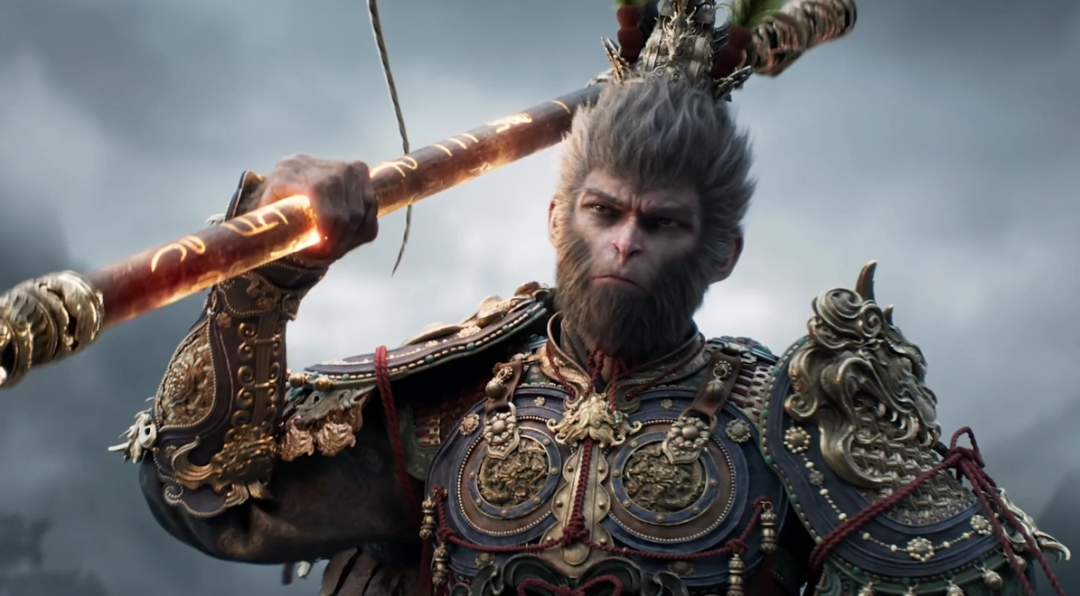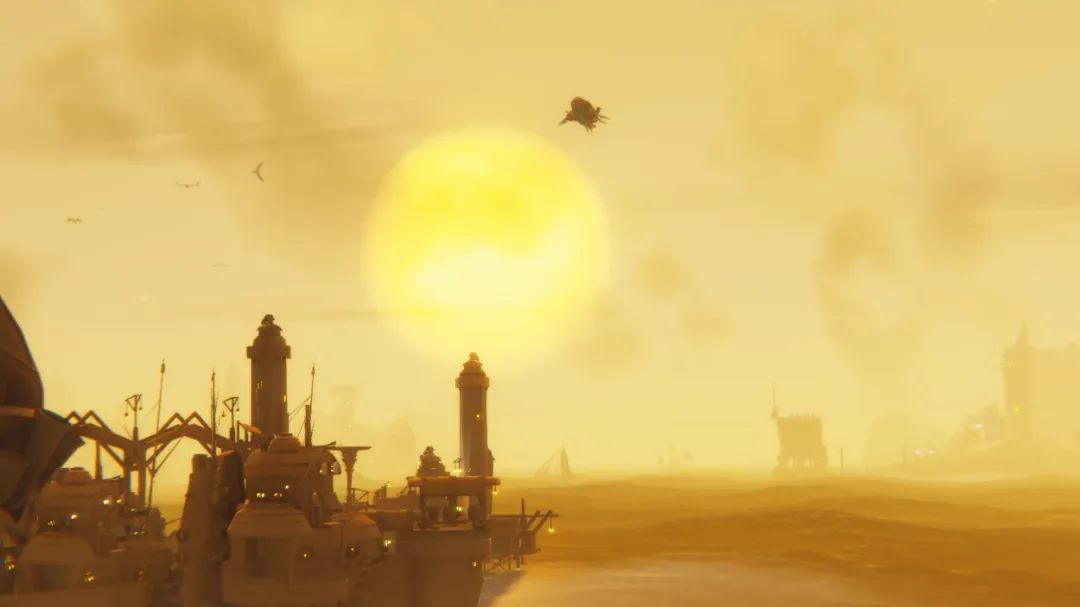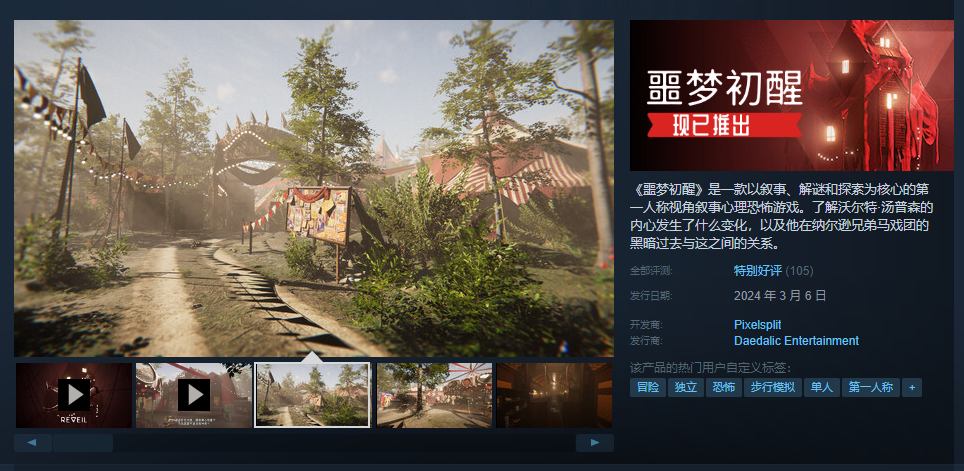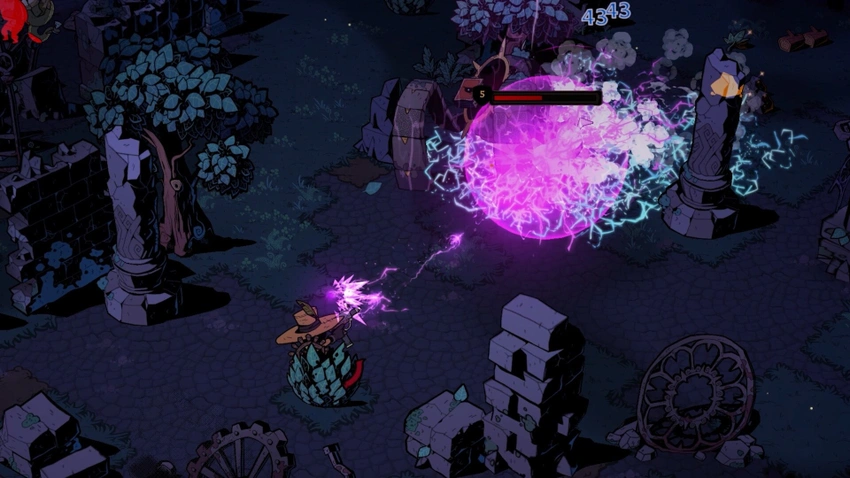
Wizard with a Gunis a cooperative survival game set in a world devastated by magical catastrophes. Not that any of the mages of that world have learned anything from that—they all still make use of firearm-based magic to do just about anything. From fighting monsters to building furniture, there’s a gun for that.
Game Developer spoke with Patrick Morgan, studio lead at Galvanic Games, to talk about the challenges that come with making changes to eight years of worldbuilding, the balancing challenges (and spell synergy fun) that comes from playing the game with a friend, and how it just made sense for firearm-obsessed wizards to have a gun that shoots armoires.
Game Developer: What inspired you to mix wizards and magic with the Old West? What drew you to bring these elements together?
Morgan: Back when we started Galvanic, there was a meme of Gandalf carefully inspecting an AK-47. It wasn’t the only inspiration, but it was a standout image in a broader zeitgeist of wizards with guns. We also were fans of The Dark Tower series, The Dresden Files, The Chronicles of Amber, and Harry Potter. In general, I’d say we drew inspiration from a wealth of fantasy and science fiction worlds.
I love the Western movie aesthetic of the lone hero (or antihero) against a cruel and unjust world. The setting seemed ripe for a fantasy reinterpretation, with common Western backdrops given a fantasy twist.
The combination of everything seemed like the right place at the right time.
What ideas went into creating the game’s world of flying ships, magical guns, and monstrous foes? How did you create your vision for the unique world of Wizard with a Gun?
I think about the end of the world a lot. That obsession seeps into all our games to some degree.
Wizard with a Gun is set at the brink of yet another magical catastrophe in a world that has been broken apart by multiple magic disasters over its history. The Shatter, which is a floating archipelago created from a previous magical explosion, is the heart of the latest disaster. Taking flying ships from the mainland, gunmancers have been stirring up trouble with the inhabitants and uncovering secrets that maybe should have been left alone. No matter how many times magic causes problems, wizards keep coming back to it because it’s there and it’s powerful. If they ignore magic, they risk letting someone else use its power to take over the world.
I’ve been daydreaming and writing about the world of Wizard with a Gun for eight years now. We canceled another game set in the same universe back in the early days of Galvanic, but a lot of the worldbuilding for that game created the groundwork for Wizard with a Gun. We took a very holistic approach to worldbuilding, where history and circumstance create conflict and characters. It does sometimes make it hard to change things, though, because doing so means sitting and thinking through all the historical consequences.
What thoughts went into the game’s art style? What made it feel right for how you wanted the game to feel?
Our former lead artist, Royce McLean, has a distinct and rich comic style that draws inspiration from artists like Mike Mignola. Wizard with a Gun was a perfect match for his style.
When we first started working on Wizard with a Gun, Galvanic primarily made 2D games. I saw an opportunity for us to merge our cartoony style with 3D in a way that didn’t overwhelm our artists and balloon our art budget. Early in the project, we did a handful of prototypes with sprites projected onto simple, one-directional 3d meshes. Those early prototypes showed us we could accomplish what we were hoping to with minimal impact on the budget.
Now the game’s assets are far closer to actual 3D objects, but the turnaround time for each prop is still very fast compared to a fully 3D game.
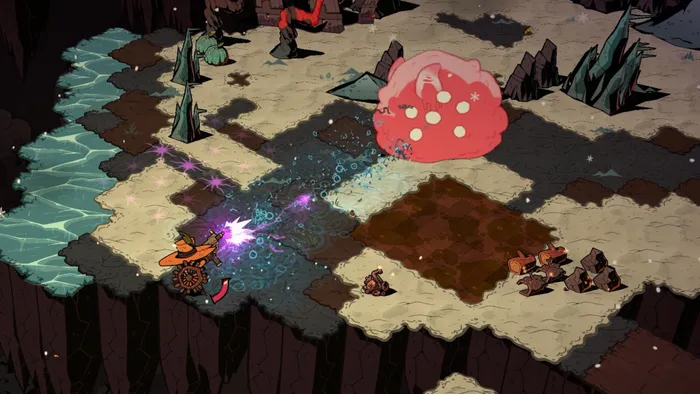
Much of what you do in the game is tied to guns. What appealed to you about this idea? And ideas went into making so many different firearms with so many different capabilities, from shooting monsters to blasting buildings into existence?
Many existing wizard games feel like spells are being fired from a gun. It made sense to us at the time to take that mechanic and see how far we could run with it. Plus, players have a strong understanding of how guns work in games. Shotguns shoot close range and a spread. Rifles shoot high-powered, long-range shots. This gave us a solid starting point for setting up the basic guns in the game.
Our initial guns were all pretty straightforward, and their quality and power are tied to the materials used to craft them. In our future updates, we’ll be adding a lot of diverse and interesting guns and getting pretty wild with their abilities while still building upon player expectations.
The furniture and floor guns were a contentious decision early in the project. I was a strong advocate for it because, in my mind, in the Wizard with a Gun universe, wizards use guns for everything magical. Guns are effectively mechanical wands. A wizard would be too lazy to build a whole wooden armoire for themselves. It’s a little silly to shoot out a fully-formed kitchen, but I think that’s part of the game’s charm.
Likewise, what ideas went into the combat abilities of the guns to make combat interesting and into the spell/powder/gun system players can use to fire some magic shots? And what ideas went into creating powers that would offer compelling synergies for players to find?
We iterated more on the spellcrafting system in Wizard with a Gun than any other system of the game. If I had infinite time and budget, I probably would have spent another few years working on it. We had to simplify it greatly over time to make something easily usable and understandable to players.
Our goal with the magical system was that players could feel like whatever kind of wizard they wanted to be. To that end, we have two design pillars that pose a constant challenge to the design team. One is that players can specialize entirely in one school of magic. The other is that different schools of magic can synergize with each other so players can multiclass. Combined with the progression systems of the game, it was challenging to settle on a system that worked with all the requirements.
In the end, we settled on a bullet and powder system. Bullets became the verbs for a player to feel like an ice or fire gunmancer. The powders became adverbs that let the player customize their spell’s behaviors in interesting ways. In our future updates, we’ll be putting a lot of focus on expanding the powders because they add the most unique-feeling attributes to a spell.
The players can escape to a safe home base in the form of the Tower. How did you decide on what players could do in the Tower?
Though we discussed a lot of different mechanics for the Tower, in some ways, the design and mechanics of the player’s home base have changed the least over the course of building the game. We always wanted it to be the safe place where the player researched, crafted, decorated, and prepared in between excursions.
The primary design motivation was that the player feels pressured while out in the overworld and peaceful in the Tower. Most of the preparation for the next run is best done in the Tower because of the lack of constraints. The player can actually do most of what they do in the Tower in the overworld, but since that world is finite, it makes more sense to do most of the crafting and research where progression is permanent.
Wizard with a Gun is a sandbox survival game that can be played cooperatively or alone. How did this decision affect the design of the game?
From the beginning, one of our core pillars was that the game be as fun to play alone as it is with friends. I think we failed a little in that pillar, because the game is way more fun to play with a friend. A big part of that is the way players can specialize in different schools of magic and how those schools interact with each other. The more players, the more havoc they can unleash on the world and combo off one another.
What challenges come from creating a survival game that works with both one or two players? What sorts of benefits come out of it?
Balance has always been a challenge, and it’s ongoing even after the game came out. The nice thing about multiplayer is a lot of the fun of a multiplayer experience comes from playing with friends. So, our primary focus in the beginning was balancing the single-player experience, followed by the multiplayer balancing.
Why did you allow defeated players to come back as ghosts? Why give the dead player the ability to mess with the monsters?
The ghost mechanic came out of feedback from our internal playtesting. We didn’t want to put players in a situation where dying meant you had to go back to the Tower and wait around for your ally to wrap up. So, letting players float about, scare NPCs, and potentially get revived by their friends meant that the run could continue until everyone was ready to go back to the Tower. The player can still choose to release and return to the Tower, but that’s the player’s choice.
What do you think co-op adds to a deadly, survival experience kind of game? What unique things do you feel come from playing challenging games with a buddy?
Co-op adds a ton to survival games, which are inherently a little lonely. We knew from the beginning we wanted a healing school of magic, which makes more sense in multiplayer than single-player (though you can heal your charmed companions). Teamwork allows for more player role specialization, where each player contributes what they’re best at and can depend on each other to cover their weaknesses.


